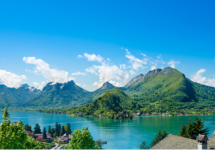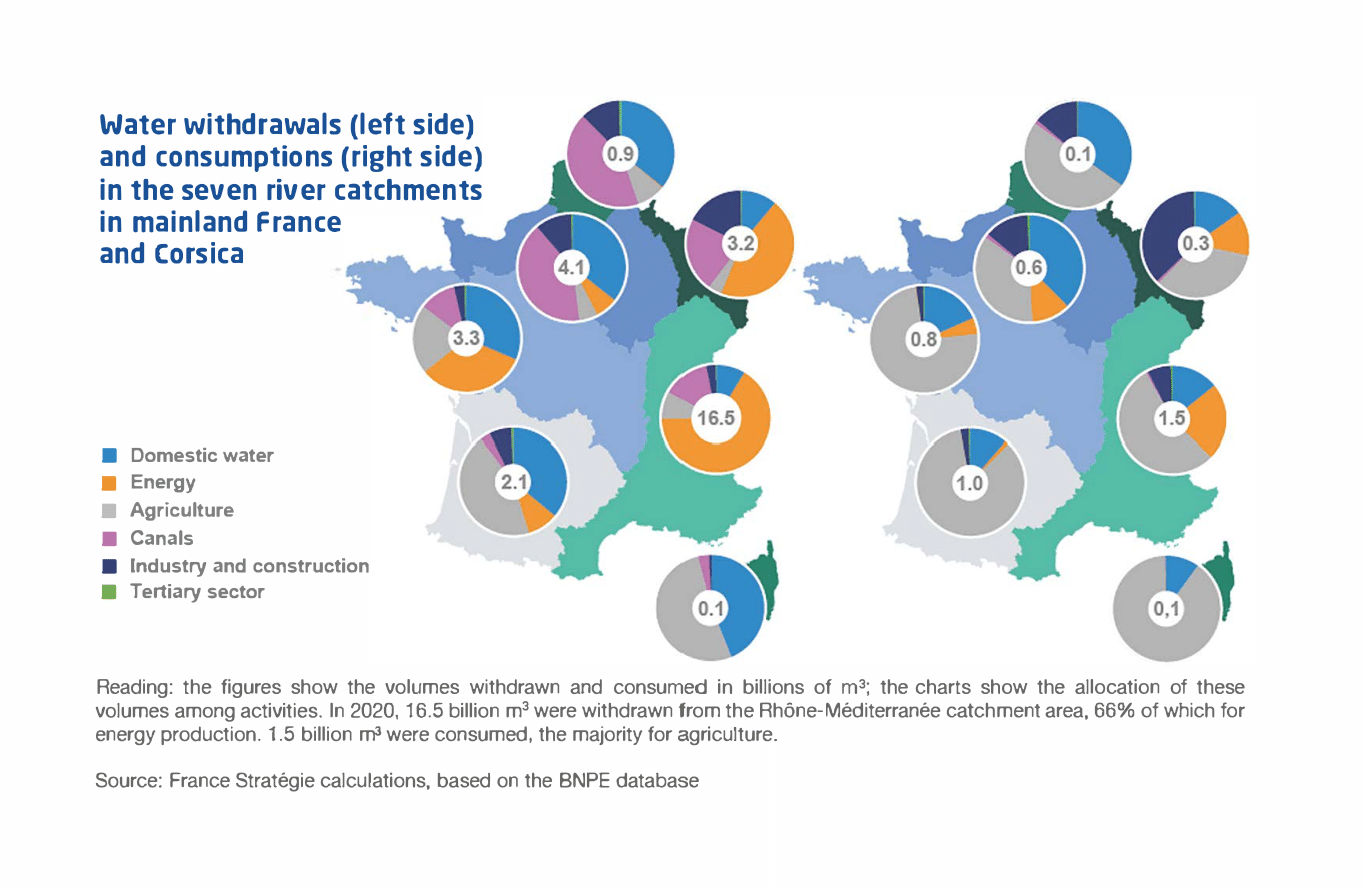
The concepts of both water withdrawals and consumptions are essential to implement public policy. Consumption, which is the portion of withdrawn water not directly discharged into the environment, reduces the quantity of water available for downstream uses. On the other hand, withdrawals alter water quality (temperature and pollutants) and quantity (availability), and can significantly affect aquatic systems.
In this note, we identified the withdrawn volumes of water by end uses in 2020. Our description is more detailed than the conventional statistics. In total, 30 billion cubic metres (m3) were withdrawn in mainland France and Corsica; 47% of this volume was used by the energy sector, notably in the Rhône-Méditerranée catchment area due to the presence of nuclear power plants with open-cycle cooling.
Moving from withdrawals to consumptions requires assumptions on "consumption factors", which we re-examined. In 2020, total consumptions are estimated at 4.4 billion m3. Crop irrigation, concentrated in the south and west of France, accounted for almost two-thirds and mainly concerns human and animal feeding. Artificial water storage – used for hydroelectricity, agricultural tanks, ornamental lakes, etc. - are not currently considered as water consumers in official sources, but we question this assumption. We estimate that approximately one billion m3 is evaporated every year in these storages, raising the total annual consumption of water to 5.4 billion m3.
While the spatial aspect of water is important, a more in-depth study of seasonal dynamics is also needed, as not only water availability, but also water demand can vary strongly throughout one calendar year.








